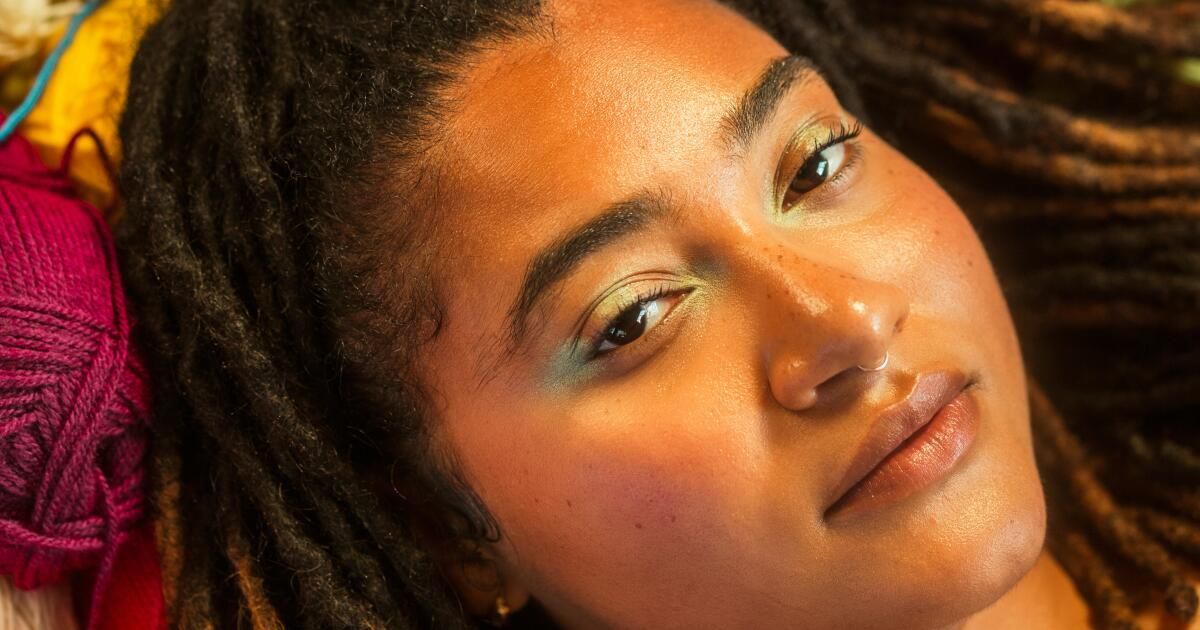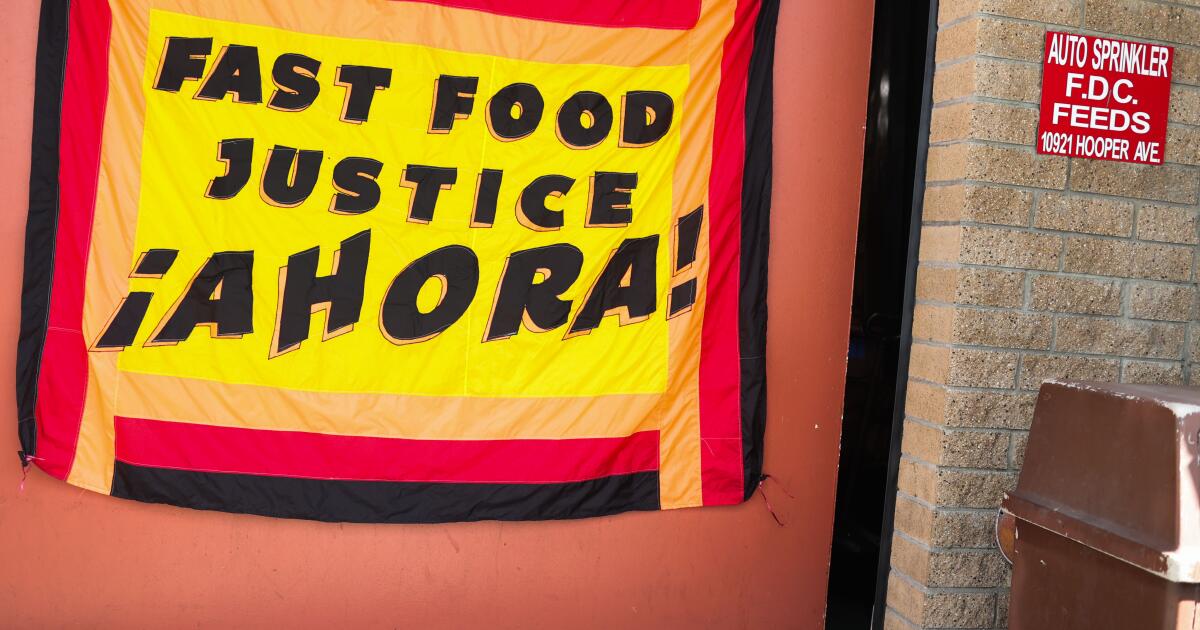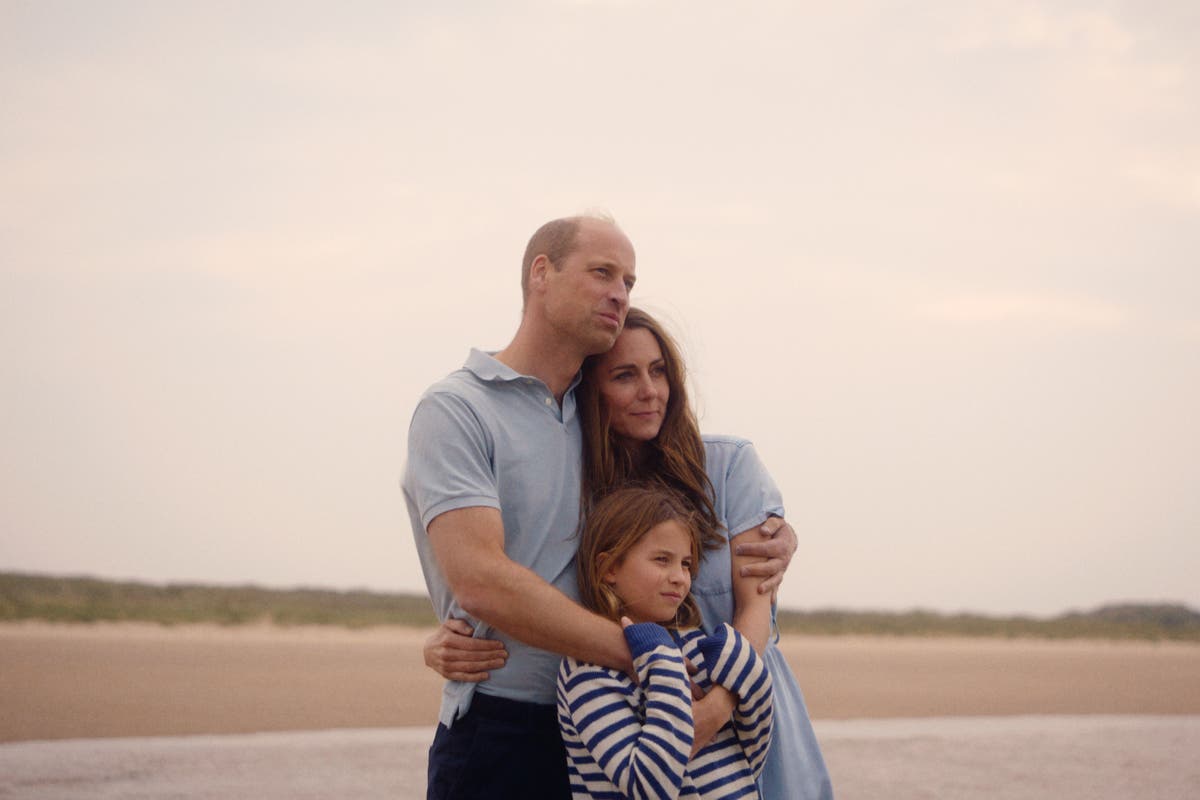Krysta Grasso, 27, is the owner of the crochet brand Unly Fox.
Surrounded by a sea of colorful yarn, Krysta Grasso, 27, lounged on her bed in her West Adams apartment while knitting a custom order.
With yarn in one hand and a crochet hook in the other, she worked intricately in more neon pink, highlighter yellow, and tortoise blue that she had hand-dyed in her kitchen. When she finished, she held up his creation: a hat with fox ears, one of his signature pieces.
Grasso's crochet brand, unlikely fox, is having a brilliant moment: Her designs have been seen on several musicians, including Grammy-winning rapper Kendrick Lamar, Malaya (who wore a hat during an NPR Tiny Desk performance), and Amindi.
Still, despite the recent fanfare, Grasso's days haven't changed much. This quiet afternoon is very similar to those he used to spend with his mother, Dunia, who taught him how to knit when he was five years old. Together, they would sit on the couch, watching cartoons and romantic comedies for hours while they knitted everything from scarves to granny pictures, which they sometimes turned into blankets.
Grasso liked crocheting simply because “my mom did it,” she said of Dunia, whose signature is tattooed in red on her left forearm. “I always wanted to be like her. Most of the things she did, I just wanted to do naturally.”
For many years, crochet was just a hobby for Grasso, nicknamed Fox. She comes from three generations of seamstresses in her Caribbean family: Her grandmother owned a sewing boutique in the Chicago area, where Grasso grew up. When he was a teenager, he sold DIY clothing on Etsy. But it wasn't until his mother died suddenly in June 2018 from cardiac arrest, just days after suffering a stroke, that Grasso began knitting with new vigor.
At first, it was her way of crying, an attempt to find moments of joy in each day. And then it became something even more.
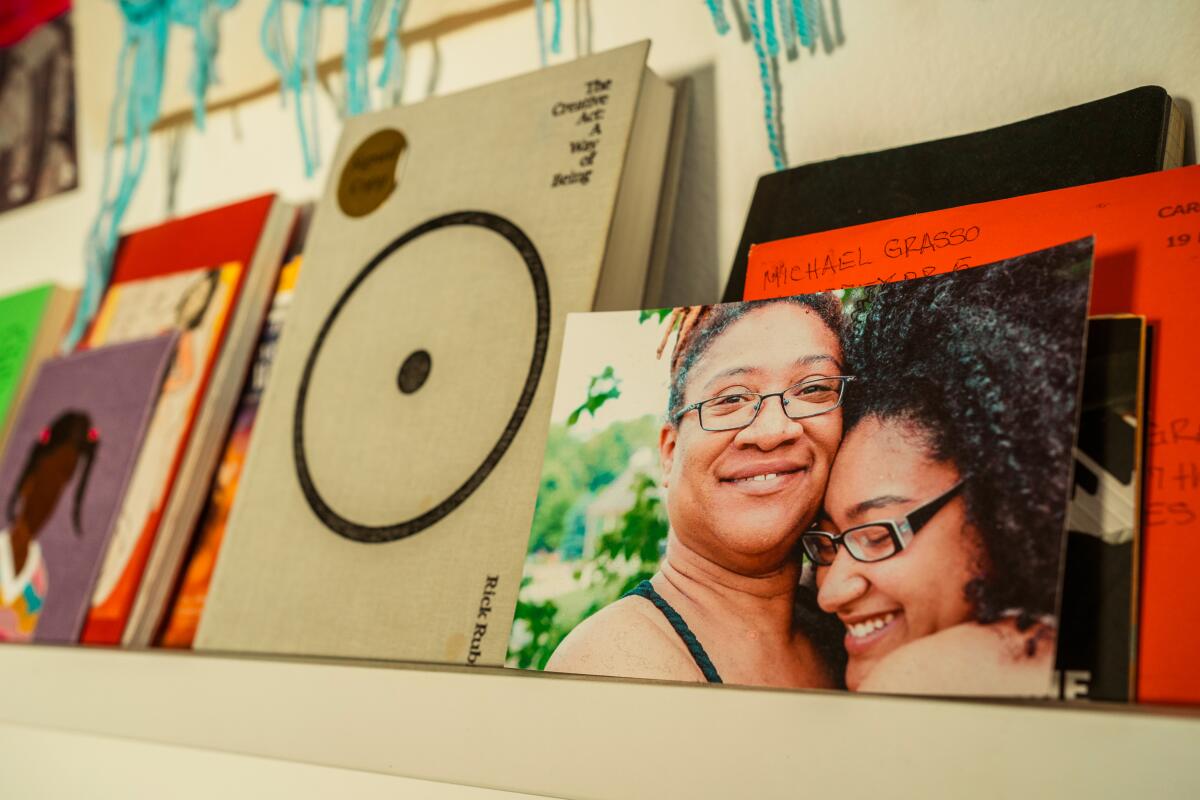
A photograph of Krysta Grasso and her late mother, Dunia, is displayed in Grasso's bedroom and crochet studio.
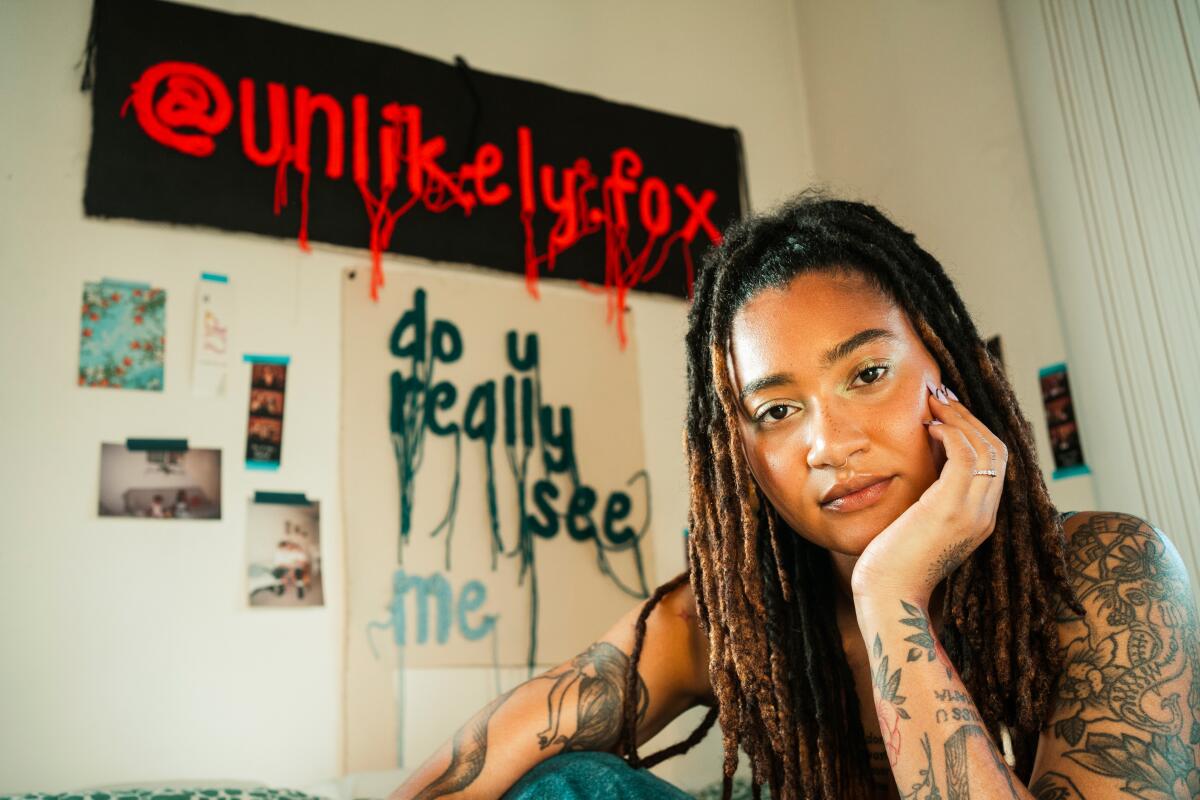
Krysta Grasso, owner of Likely Fox, likes to keep the threads loose on her crochet products to show how many colors and textures she uses.
“After her death, I realized how deeply connected my crocheting was to her,” Grasso said of her mother, who raised three children alone. “I was really motivated to start doing it for a living.”
While knitting, Grasso listened to her mother's Spotify playlists, which were full of reggaeton, R&B and soul songs, and watched her favorite Christmas movies. Grasso made hats, swimsuits and sweaters in vibrant colors. He also began designing crochet sleeves and hooded front pockets, which he added to vintage t-shirts. “When I'm sad, I tend to gravitate toward bright colors,” he said.
While Grasso was looking for work in Los Angeles, he began selling his products at the popular Melrose Trading Post. At the time, she was one of the few crochet artists there. At first she didn't make much money, but she always received the same praise from clients. “People said, 'I've never seen anything like that before,'” she said, adding that they were intrigued by her use of color.
She eventually found work as a waitress at a restaurant, but was laid off when the pandemic hit. With more free time, she began experimenting with color and hand-dying her own yarn for her crochet work. The process, which lasts a few hours, is as follows: you soak the thread in citric acid, then place it in a pan on the stove that you fill with a mixture of hot water and dye and let it sit for a set time to absorb the color. This can take between 30 minutes and two hours. She then removes the pan from the heat so the thread can cool, then washes it and lets it dry.
“Color is what I like most about the entire craft,” he said, adding that he is also intrigued by various textures. In a single piece, for example the hat with fox ears, Grasso can use up to 25 different color combinations. He likes to keep the threads loose in his garments (a different style choice) to show how many colors and fibers he uses in his products. No two items are ever the same.
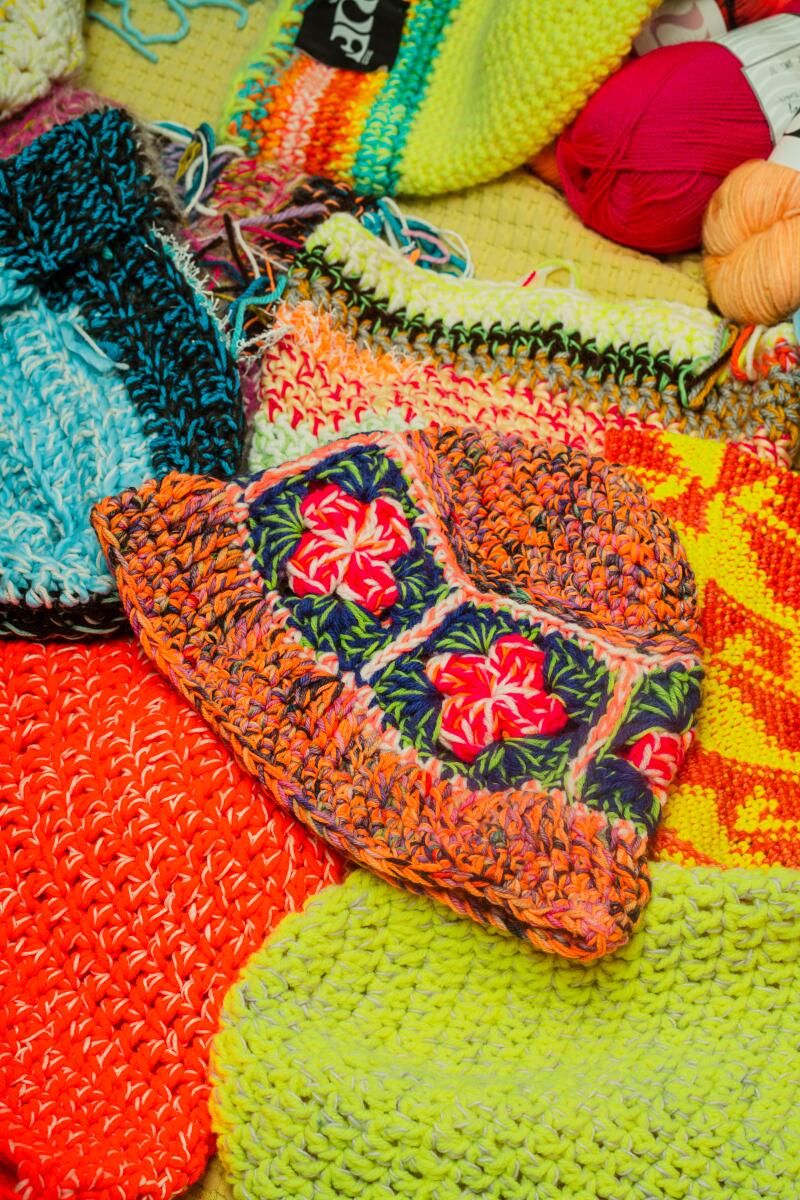
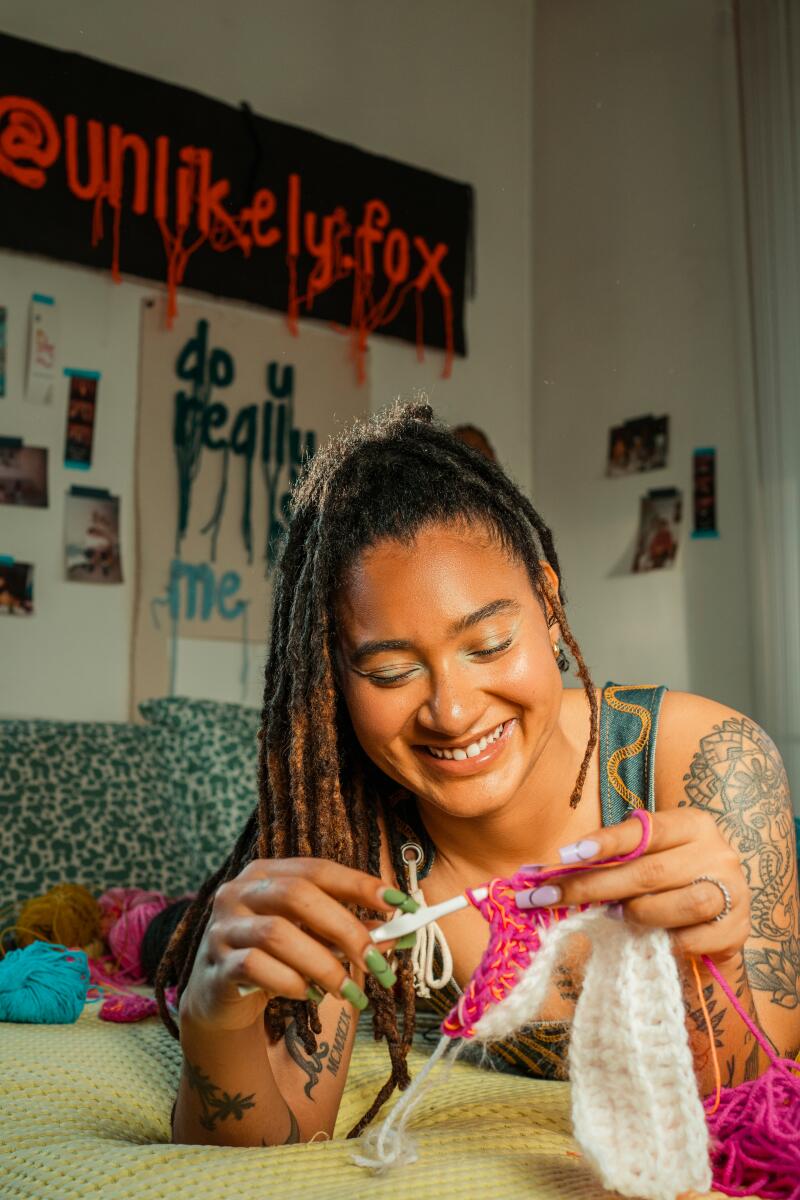
Grasso can use up to 25 color combinations for your most vibrant crochet projects.
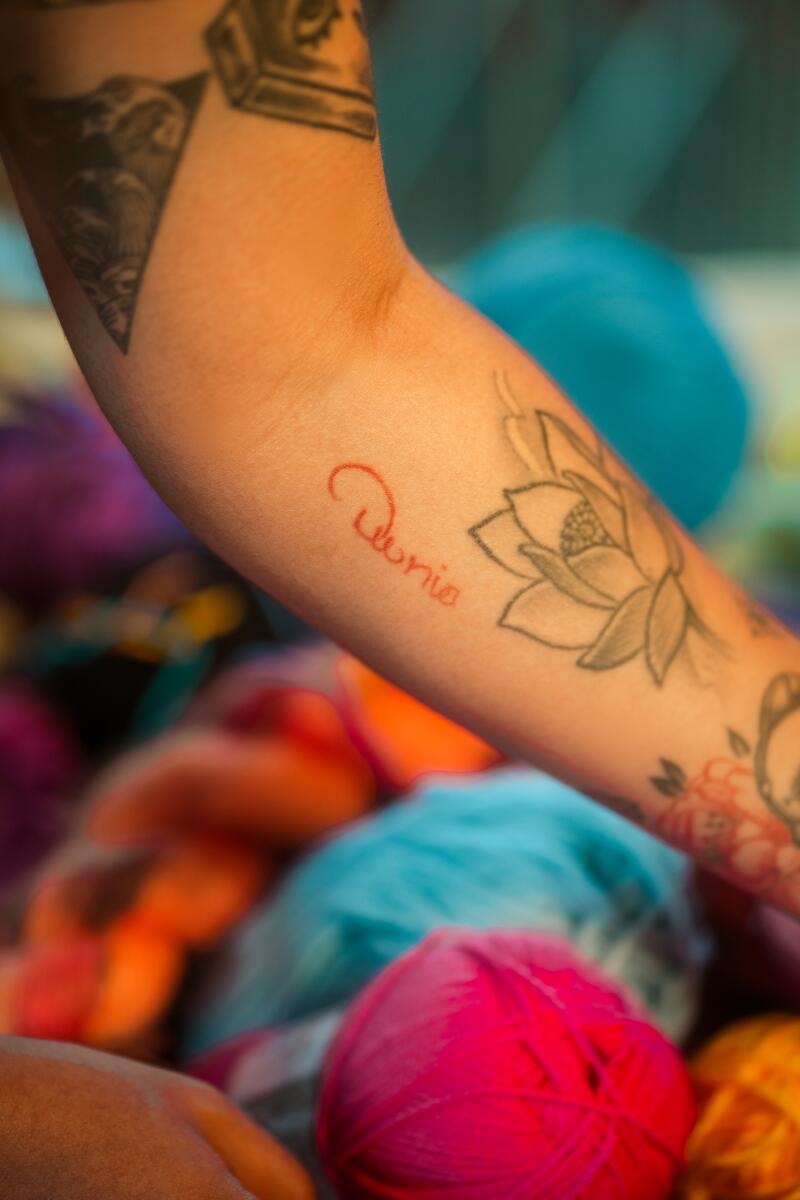
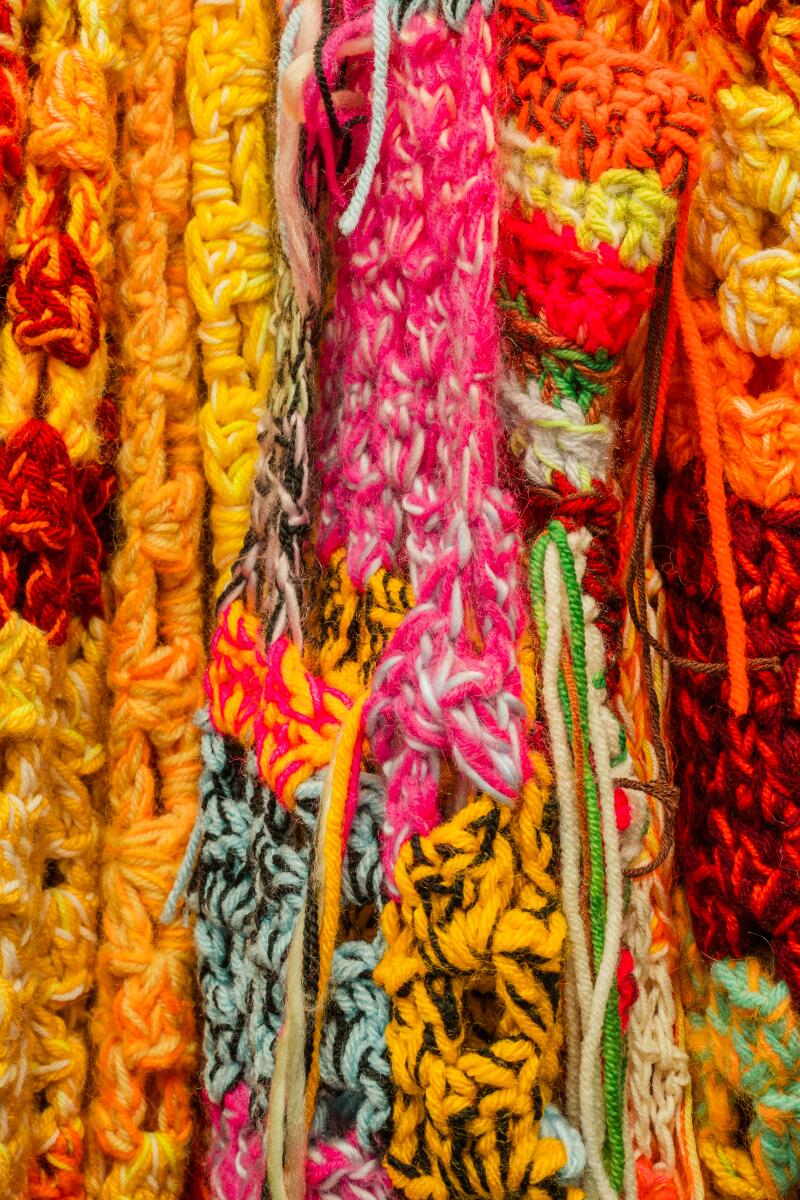
A tattoo of Grasso's mother's name, Dunia. Grasso uses a mix of fibers: mohair, merino wool, cotton, silk, recycled fibers and dead acrylic. (Zay Monae/For The Times)
Grasso often uses a blend of fibers (mohair, merino wool, cotton, silk, recycled fibers and dead acrylic) to avoid buying too much acrylic yarn, which often ends up in landfills because it is produced in abundance and is not used quickly. Enough, he said. The higher-priced fibers are the reason their hats sell for $190 and clothing items cost between $300 and $1,500.
In early 2021, Grasso began selling skeins of her hand-dyed yarn online, which were a success. When he launched a collection called “Steven Universe” Yarn Club, based on the Cartoon Network animated series, he made almost $10,000 in two days from the yarn, which was equivalent to between $25 and $30 per ball.
“I was incredibly surprised. She had never had such a big fall. Things definitely changed,” she said. She was working in a bookstore at the time, but this made her realize that she could potentially make Improbable Fox her main source of income.
Shortly after, he quit his job and continued making monthly yarn releases, all inspired by animated shows, video games and movies he liked, such as “Chowder,” “Animal Crossing,” “Rick and Morty,” and “The Princess and the Frog.” ”
By that fall, Grasso was selling Black market flea, a monthly flea market filled with clothing brands and handmade products, all designed and made by black artisans. Before long, her Improbable Fox products were selling out and she was able to make half her income from the market and the other half from her monthly yarn deliveries.
“I think Black Market Flea was my target audience,” he said. “Those are my peers, and I think it was a lot easier to communicate what I was doing to people who looked like me, rather than being a small group of brown and black people in such a big white space.”
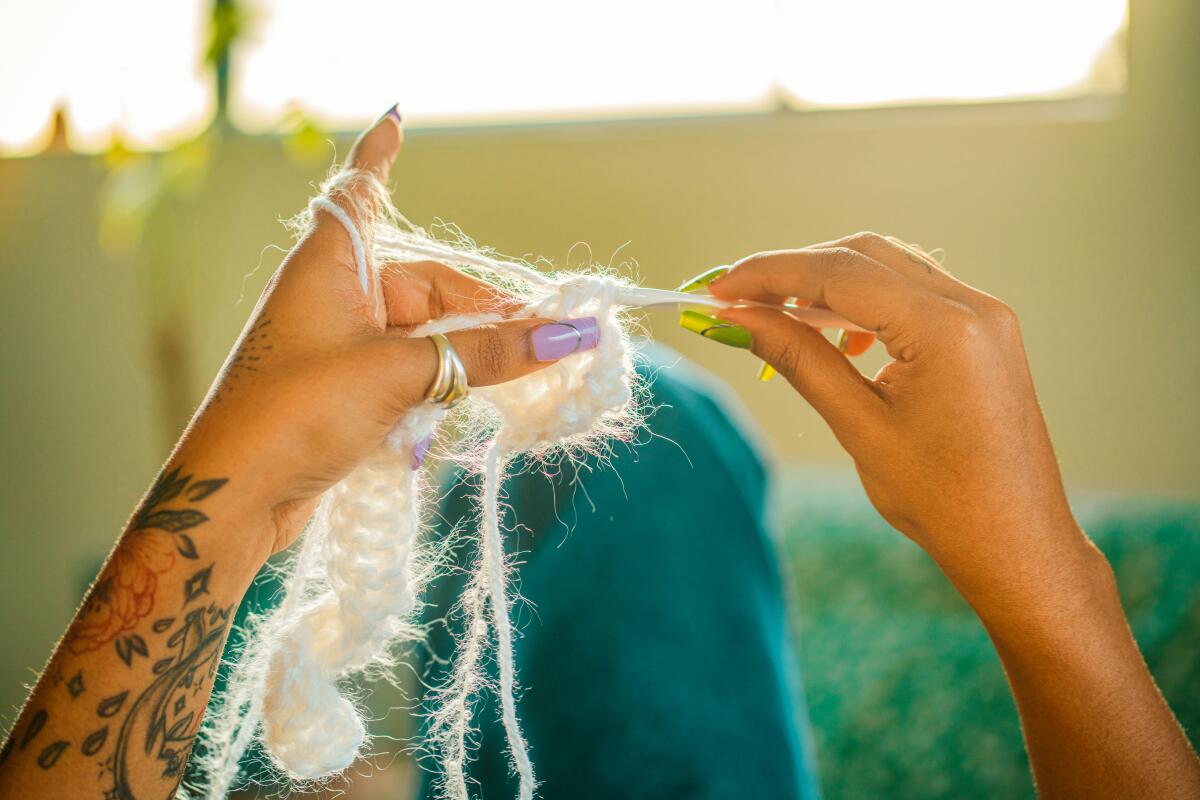
Krysta Grasso said each item she knits is personal and feels like “a part of me.”
There are not many times that you will see Grasso without a crochet hook and thread in his hands.
Stephanie Smith first met Grasso when she was knitting outside a coffee shop in Leimert Park a couple of years ago.
“She was so focused and did it with ease, and I thought it was great,” said Smith, a photographer, regular customer and now close friend of Grasso. “It was refreshing to see a younger woman crocheting.”
Smith owns about 10 Grasso pieces, including a matching set (a wrap skirt and bustier top with removable sleeves) that she customized for her 26th birthday. “I've bought other crochet pieces [from other designers], but hers are much tighter woven and her colors really stand out to me.” Every time Smith wears a Likely Fox piece, people call her to ask where she got it, she said.
Smith said she appreciates Grasso's pieces even more because of how personal they are to her.
“I will never get rid of these pieces because I feel like they are part of my friend and also part of her mother,” she said.
If you follow Grasso on social media, you'll know who his mother is. Dunia's face, which is almost identical to Grasso's, is plastered on Grasso's Instagram feed, and Grasso's bio simply says “Dunia's daughter.” Grasso has locomotives similar to the ones his mother used; she got hers shortly after her mother died. She also gets candid online about the days when her pain is even more intense and she shares activities she does to help improve her mood, like knitting and running.
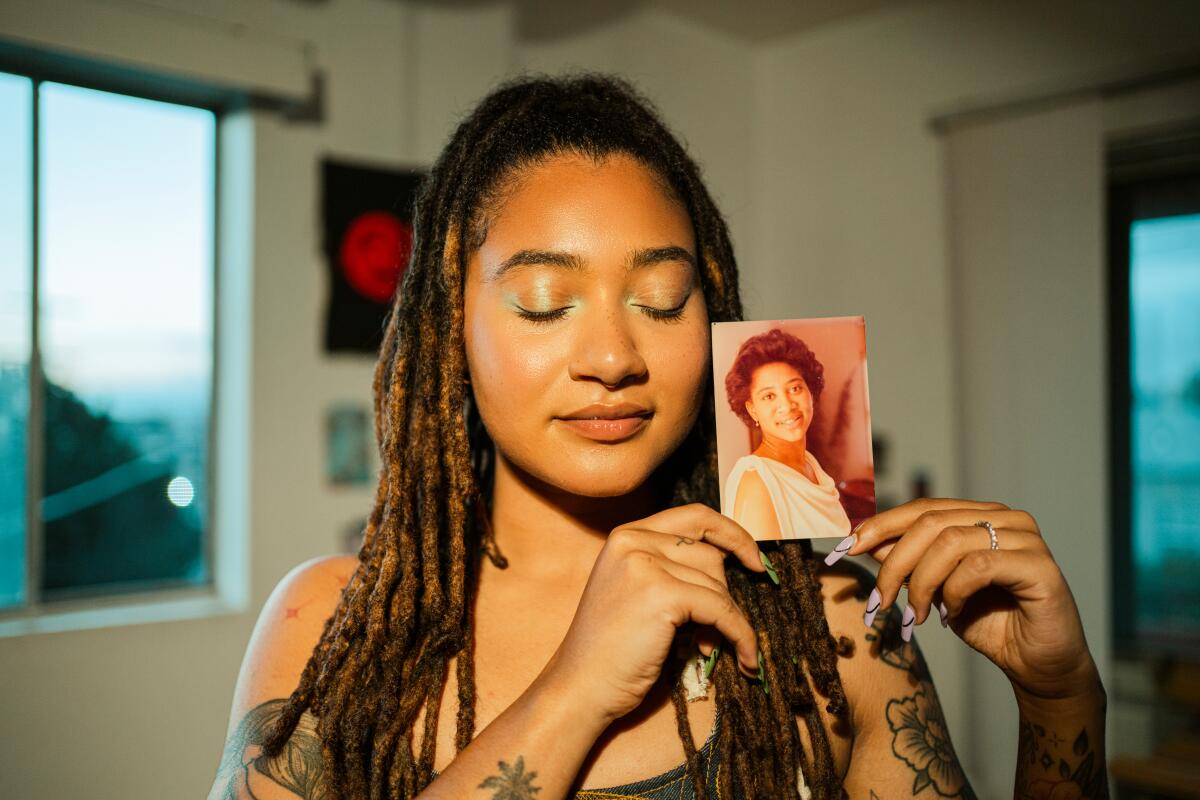
Krysta Grasso with a photo of her late mother, Dunia, who taught her how to knit when she was 5 years old.
For Grasso, talking about her mother and her grieving process is a necessity. “I think I have to do it,” he said. “When I don't do it, I feel terrible.”
Grasso talks about her experience online not only because it helps her “but I also want to encourage people to cry more openly. “I think just talking about something, whether it's painful or not, is really powerful.”
Sometimes Grasso can find it conflicting to sell her crochet work because it is “a part of me,” she said. For this reason, he recently transitioned from visiting flea markets regularly to focusing more on making commission-based pieces and selling limited releases online. That way, he won't have to convince anyone to buy his work, he said.
He no longer focuses on Improbable Fox full time because it was becoming “intense.” This has given him the freedom to expand his business slowly and intentionally.
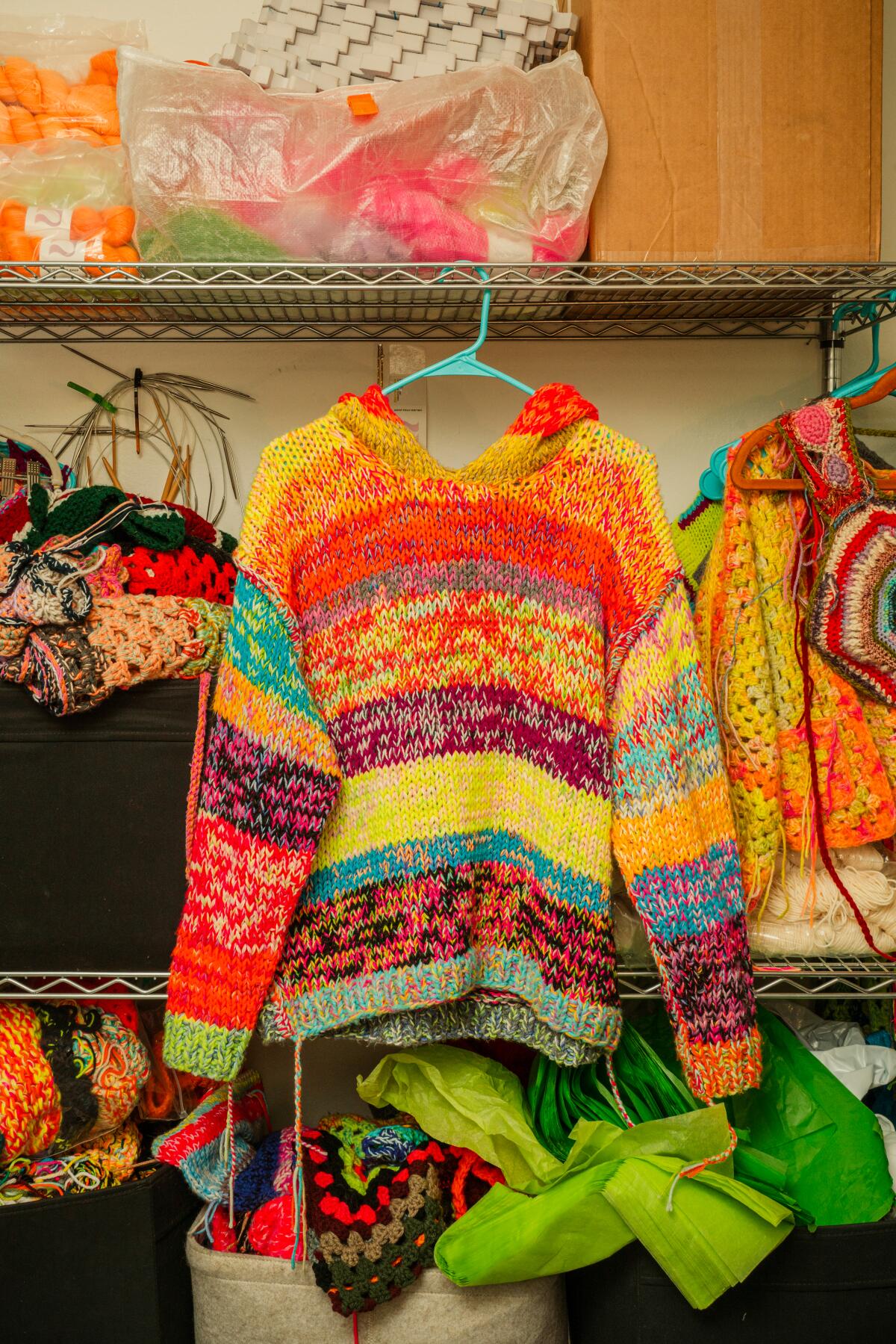
A crochet sweater from the Likely Fox collection.
She didn't grow up with a lot of money, she said, “so I know I'll be fine with less.”
In the fall, Grasso will move to Portland, Oregon, to pursue a degree in graphic design, something she has been passionate about for years. She plans to continue selling her crochet pieces and making monthly deliveries on the Likely Fox website. Her long-term goal is to become a full-time knitwear designer and advance her career in Fashion.
When Grasso reflects on the brand he built in his mother's memory, he says Dunia would think “it's really cool.”
“I envision the version of us that could have lived longer together, and I think we both would have become even cooler people together,” Grasso said, while in his bedroom and study, which is filled with photos of his mom. “I think she is proud. I think she just wants me to find mine. [way] and not be influenced by the things around me and the people around me.”
She smiled and added, “I think he just wants me to move on.”

